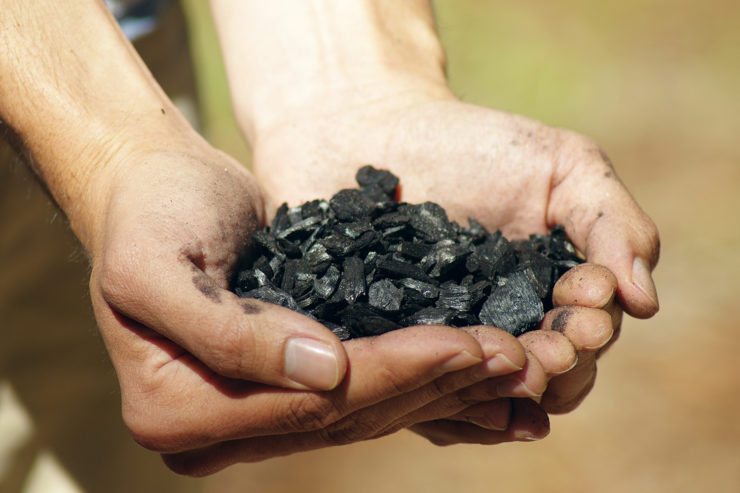Biochar has the potential to provide environmental and economic benefits to California’s agricultural sector through improved water retention [1], carbon sequestration [2], and reduced nutrient leaching [3], but realization of this potential is currently impeded by an information market failure [4]. In August, the Schatz Center was awarded a new project from the Agricultural Research Institute (ARI) to study the biochar market and evaluate how physical characteristics of different biochars relate to their market price. The outcomes from this project will help biochar producers understand how to price their product based on its characteristics, and it will help consumers identify the quality of different biochars using informed knowledge and price signals.
The current market size for biochar is estimated around 400,000 tons per year for gardening and landscaping — but it is poised to quickly grow into much larger agricultural sector opportunities where biochar could gain an estimated 2% of the soil amendment market [5]. To achieve this growth, improved information about available biochar products is needed. Currently, many sellers may not receive the full value for their product, and consumers do not know the characteristics of the biochar they are considering for purchase because quality assessment protocols have not been widely adopted. This project aims to understand this market failure and help close the information gap between producers, distributors, and buyers by measuring the characteristics of a dozen biochar products and interviewing stakeholders about desirable properties. By improving the maturity of the biochar market, this project will help California farmers save water and improve crop yield by appropriate, context-specific biochar applications.
As the first step in this project, Mark Severy attended the U.S. Biochar Initiative 2018 Conference in Wilmington, Delaware to deliver a presentation and connect with key stakeholders. The presentation, Biochar Quality and Market Assessment: Comparing Physical Properties to Market Value, provided an overview of the current state of the biochar market and demonstrated how price is not always reflective of quantitative, measured physical characteristics. Mark connected with many biochar producers who are willing to participate in interviews and contribute samples for testing and analysis.
This work will continue by collecting samples of biochar and conducting measurements to quantify their chemical, physical, and agricultural properties. Before and after the tests, interviews with biochar suppliers and end users will be used to understand how they evaluate the use value of biochar in each context. Results will be disseminated through a webinar and technical report when the project concludes in early 2020.
- Abel, Stefan, Andre Peters, Steffen Trinks, Horst Schonsky, Michael Facklam, and Gerd Wessolek. “Impact of biochar and hydrochar addition on water retention and water repellency of sandy soil.” Geoderma 202 (2013): 183-191. doi: 10.1016/j.geoderma.2013.03.003
- Brassard, Patrick, Stephane Godbout, and Vijaya Raghavan. “Soil biochar amendment as a climate change mitigation tool: Key parameters and mechanisms involved.” Journal of environmental management 181 (2016): 484-497. doi: 10.1016/j.jenvman.2016.06.063
- Laird, David, Pierce Fleming, Baiqun Wang, Robert Horton, and Douglas Karlen. “Biochar impact on nutrient leaching from a Midwestern agricultural soil.” Geoderma 158, no. 3 (2010): 436-442. doi: 10.1016/j.geoderma.2010.05.012
- Groot, Harry, Jeff Howe, Jim Bowyer, Ed Pepke, Richard, A. Levins, and Kathryn Fernholz. “Biochar as an innovative wood product: A look at barriers to realization of its full potential.” Dovetails Partners, Inc. (2017) Accessed August 27 2018
- Sasatani, Daisuke and Ivan Eastin. “Demand curve estimation of locally produced woody biomass products.” Applied Engineering in Agriculture 34, no. 1 (2018): 145-155. doi: 10.13031/aea.12392














